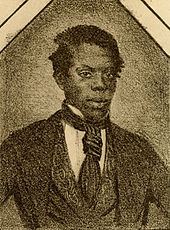William Henry Lane, know as “Master Juba” on stage, was the most renowned black stage performer prior to the 1850’s. William performed with minstrel shows (Ethiopian Serenaders) and toured not only in the U.S. but to Europe. He was the first African American to perform in England. He was a famous performer and is arguably a main attributer and constituent to what we now call tap dance.
From Eric Lott’s Love and Theft: Blackface Minstrelsy and the American Working Class we know that African Americans dressing up and putting cork on their faces was a known thing, but Lane had done this in a time that was a prequel to thus. Lane had seemingly found success in the minstrel circuit.
Lane was a huge success over in England and the rest of Europe. An English critic after seeing Lane perform said:
Juba’s whirlwind style [was] executed with ease and “natural grace.” “[Such] mobility of muscles, such flexibility of joints, such boundings, such slidings, such gyrations, such toes and heelings, such backwardings and forwardings, such posturings, such firmness of foot, such elasticity of tendon, such mutation of movement, such vigor, such variety . . . such powers of endurance, such potency of ankle. (Conway)
Many viewers had a difficult time describing Lane’s style of dancing. It was upbeat and followed closely to the percussion of the music. It is argued whether the inability of others to describe his dancing style was do to his African background and whether he brought pieces of African dance into his style or not. Regardless, Lane became a sensation.
Lane and his style of dancing was so renowned that he had been mentioned in the works of Charles Dickens. He lived a hectic and short life, “records indicate Master Juba lived the intense life of a touring performer, giving shows every night. He also opened a dance school in London” (Peters). Unfortunately, Lane passed away in his late 20s in England.
Works Cited:
Lott, Eric. Love and theft: blackface minstrelsy and the American working class. Oxford University Press, 2013.


